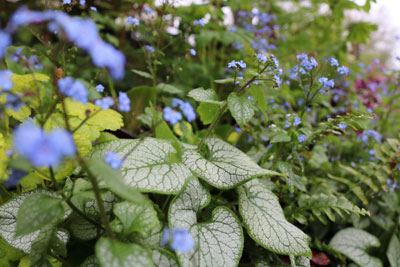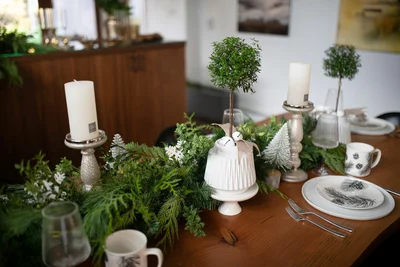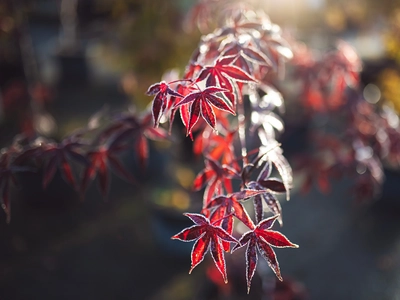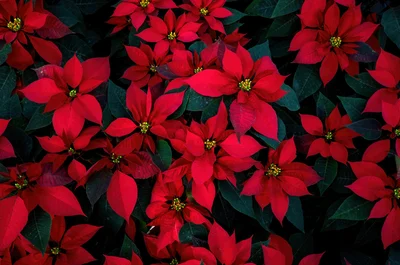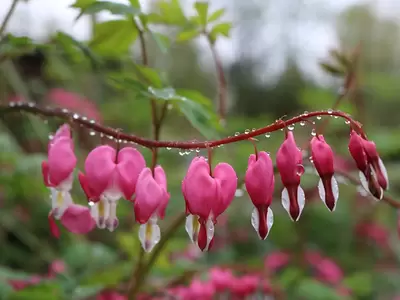
Written by Ingrid Hoff
Finally, it’s time to blow off winter, step out into the sunshine and enjoy the arrival of spring. Outside in the garden is the best place to be right now and while I love the flush of colour and glory of the spring bulbs, I can’t help but think the spring blooming perennials need a little shout-out as well. You just have to love the perennial workhorses of the garden, coming back every spring to bring us the beauty of the season. Below are some of my top spring blooming perennials you should consider adding into your outdoor space.
Peonies
Queen of the spring garden, beloved cut flowers of Instagram and brides' bouquets, if you have the space, grow a peony. And bonus, they are long living, some reports have them as old as 100 years. Plant in full sun, with well-drained soil. I would be remiss if I didn’t mention the ants.
- Ants and peony flowers go together, they have a form of mutualism, as in both organisms benefit from their relationship
- Peony flowers produce nectar at the base of the flower which attract ants
- The ants feed off the nectar and the peony benefits since ants protect the flower from other insects that would damage the growing bud. It’s a win-win and once the buds open the ants will move onto another food source.
If cutting the flowers to bring inside just give them a little shake to dislodge any ants, or a quick rinse should convince any stragglers to “bug-off.” Never spray or try to get rid of the ants from your peonies, they are normal and mutually beneficial.
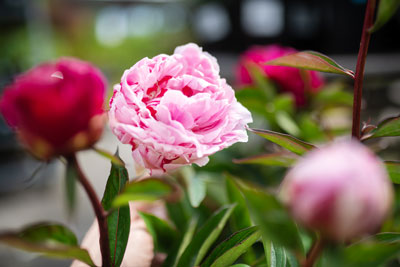
Bleeding hearts (Lamprocapnos spectabilis)
The elegant flowers of these plants remind me of a charm bracelet with heart-shaped flowers cascading down its length. Once it blooms, spring has arrived. Plant them in shade or part shade, with an organic soil that stays consistently moist (not usually a problem in the spring). The show ends as summer approaches (and bountiful water disappears) the plant goes dormant until next spring. Some unique cultivars to look for are ‘Gold Heart’ with vibrant gold foliage perfect for brightening up a shady corner, or ‘Valentine’ with striking red and white flowers.
Primula spp.
I’m not talking about the seasonal rainbow-coloured primulas you see everywhere in early spring. I’m talking about the perennial primulas and I could honestly write a whole blog on the subject. They are adaptable, can handle both wet and slightly dry soil (although they will go dormant in dry conditions), and thrive in both shade and sunny conditions. This makes them very easy to grow and suitable for almost any site. Some of my favourites include drumstick primula (Primula denticulata), orchid primrose (Primula vialii), Primula auriculata (often just shortened to auriculas), and the gold-laced primulas (Primula elatior Gold-Laced Group). Check out the perennial plant section at your local GARDENWORKS and find your favourite.
Lungwort (Pulmonaria spp.)
I always think “such an ugly name for such a pretty plant.” The name is old and comes from the spotted leaves. Long ago it was thought the spots on the leaves were an indication these plants could help cure lung conditions, because diseased lungs were often spotted and the leaves of these plants are spotted. Even without the blue and pink bell-shaped spring flowers, the evergreen silver mottled leaves are welcome in any garden. Plant in them in a shady spot with good drainage and an organic soil.
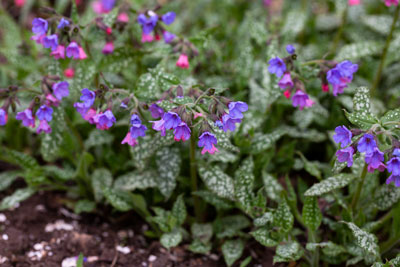
Perennial Alyssum (Aurinia saxatilis)
A glorious carpet of gold is how people describe this plant. Also called basket of gold, the small yellow flowers completely cover this spreading, low growing plant. Every spring I see it cascading over retaining walls (usually in combination with the two next plants in purple and white). Plant it in full sun, with well-drained soil and you will be rewarded with a low maintenance carpet of spring gold. After blooming cut back the flowers by 1/3 to keep it nice and compact.
Rockcress (Aubrieta deltoidea)
Just like perennial alyssum, rockcress is a carpet of cheerful spring purple that is perfect for cascading over a wall, edging a bed or anywhere you need a ground cover. There are also pink and white cultivars available but the purple is arguably the most popular. Plant it in full sun to part shade, with a well-drained soil. Cut it back each year in the same way you would perennial alyssum.
Candytuft (Iberis sempervirens)
An evergreen groundcover with elegant pure white flowers. Similar to alyssum and rockcress it is often planted with them. It a sure sign of spring for me when I see yellow, purple and white cascading over retaining walls or spilling over the edge of planting beds. Plant it in full sun with well-drained soil and prune it back after flowering.
Siberian Bugloss (Brunnera macrophylla)
The perfect plant for a dappled shade with dainty heart-shaped leaves decorated with silvery markings and a frothy cloud of bright blue flowers (they remind me of forget-me-nots). The come with bright green leaves or even better are the many cultivars with decorative leaf markings, the best having silvery leaves such as the popular ‘Jack frost.’ Plant in full to part shade, with a well-drained but moist woodland soil.
